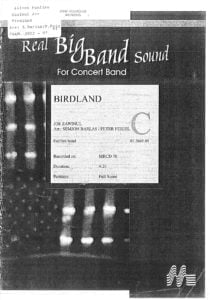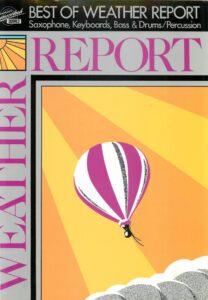Come join us now, and enjoy playing your beloved music and browse through great scores of every level and styles!
Can’t find the songbook you’re looking for? Please, email us at: sheetmusiclibrarypdf@gmail.com We’d like to help you!
MIDNIGHT MODD – JOE ZAWINUL (As played by Bill Evans) sheet music, Noten, partitura #smlpdf

Best Sheet Music download from our Library.

Please, subscribe to our Library.
If you are already a subscriber, please, check our NEW SCORES’ page every month for new sheet music. THANK YOU!
Browse in the Library:
Or browse in the categories menus & download the Library Catalog PDF:
1. Who Was Joe Zawinul: A Musical Chameleon and Pioneer
- Early Life and Roots: Born Josef Zawinul in Vienna, Austria, in 1932, he was a child prodigy on the accordion before switching to piano. He studied classical music at the Vienna Conservatory, giving him a formidable technical foundation.
- Immersion in the Jazz Tradition: He moved to the United States in 1959 on a scholarship to Berklee, but quickly left to join the scene. He first gained major recognition as the pianist in Cannonball Adderley’s quintet (1961-1970). It was here he composed the soul-jazz anthem “Mercy, Mercy, Mercy” (1966), a massive hit that showcased his knack for catchy, gospel-infused melodies.
- The Miles Davis Catalyst: His most pivotal career turn was his contribution to Miles Davis’s groundbreaking album In a Silent Way (1969). Zawinul composed the title track, a serene and atmospheric piece that was a radical departure from the high-energy jazz of the time. He also played a central role on Miles’s earth-shattering fusion masterpiece, Bitches Brew (1970). His work with Miles demonstrated his mastery of electric keyboards and his vision for a new, expansive, and rhythmically complex form of jazz.
2. Why He Is So Important and Influential: The Core Innovations
A. The Architect of Weather Report
In 1970, Joe Zawinul co-founded the legendary band Weather Report with saxophonist Wayne Shorter. This band became the quintessential jazz fusion group for over 15 years. Under Joe Zawinul’s increasing leadership, their philosophy evolved from collective improvisation to what Joe Zawinul called “we always solo, we never solo“—a concept where every musician’s part was an integral, melodic component of a intricate tapestry of sound.

Weather Report was a laboratory for Zawinul’s innovations, most famously heard in their global hit “Birdland” (from the 1977 album Heavy Weather). This piece is a masterpiece of composition, blending infectious funk rhythms, sophisticated harmonies, and unforgettable melodies, and has become one of the most covered jazz tunes of all time.
B. Revolutionizing the Sound of the Keyboard
Zawinul was not just a player; he was a sonic architect. He was one of the first jazz musicians to fully embrace and master electronic keyboards, treating them as entirely new instruments.
- The Fender Rhodes Electric Piano: He pushed the Rhodes beyond its typical ethereal sound, creating percussive, bell-like, and deeply funky tones.
- The Oberheim Polyphonic and Yamaha CS-80 Synthesizers: He was a pioneer in using analog synthesizers to create lush, orchestral pads, searing lead lines, and otherworldly soundscapes. He didn’t just play presets; he meticulously crafted his own sounds, making his synthesizer voices as recognizable as a human voice.
- Acoustic Piano with Effects: He even ran his acoustic piano through wah-wah pedals and echoplex units, creating a hybrid, futuristic sound.
C. A Global Musical Visionary
Long before “world music” became a common term, Zawinul was seamlessly integrating global rhythms and melodies into his compositions. His Austrian roots gave him an affinity for European folk melodies, but his music also deeply incorporated:
- African Rhythms: Complex, interlocking polyrhythms were the engine of Weather Report.
- Brazilian and Latin Flavors: He worked with percussionists like Airto Moreira and used samba and batucada rhythms.
- Middle Eastern and Eastern European Harmonies: His compositions often had a melancholic, modal quality that felt both ancient and futuristic.
He famously described his music as being “from the roots, but with new leaves,” honoring tradition while relentlessly pushing forward.
D. Master Composer and Bandleader
Unlike many jazz musicians who focused on improvisation over simple themes, Zawinul was a composer in the grand sense. His pieces for Weather Report were intricate, through-composed works with dynamic shifts, complex structures, and lush orchestrations—all achieved by a small ensemble. As a bandleader, he had a legendary, demanding ear, famously hearing every single part in the dense sonic mix and pushing his musicians to perfection.
Legacy and Influence
Joe Zawinul’s influence is immeasurable and can be heard across genres:
- In Jazz Fusion: He is a godfather of the genre. Every keyboardist in jazz, rock, and pop who uses a synthesizer creatively owes a debt to Zawinul.
- In Modern Music: His textural and rhythmic ideas influenced funk, R&B, hip-hop (through samples of “Birdland” and other tracks), and electronic music.
- In Later Projects: After Weather Report, he led the globally-focused Zawinul Syndicate, which further explored his “world music” vision with even greater intensity until his death in 2007.
In conclusion, Joe Zawinul was important because he was a complete musician—a virtuoso player, a visionary composer, and a revolutionary sonic explorer. He took the seeds of jazz, watered them with rhythms from across the planet, and used the technology of the future to grow a new, powerful, and enduring musical tree. He didn’t just play jazz; he constantly redefined what jazz could be.

